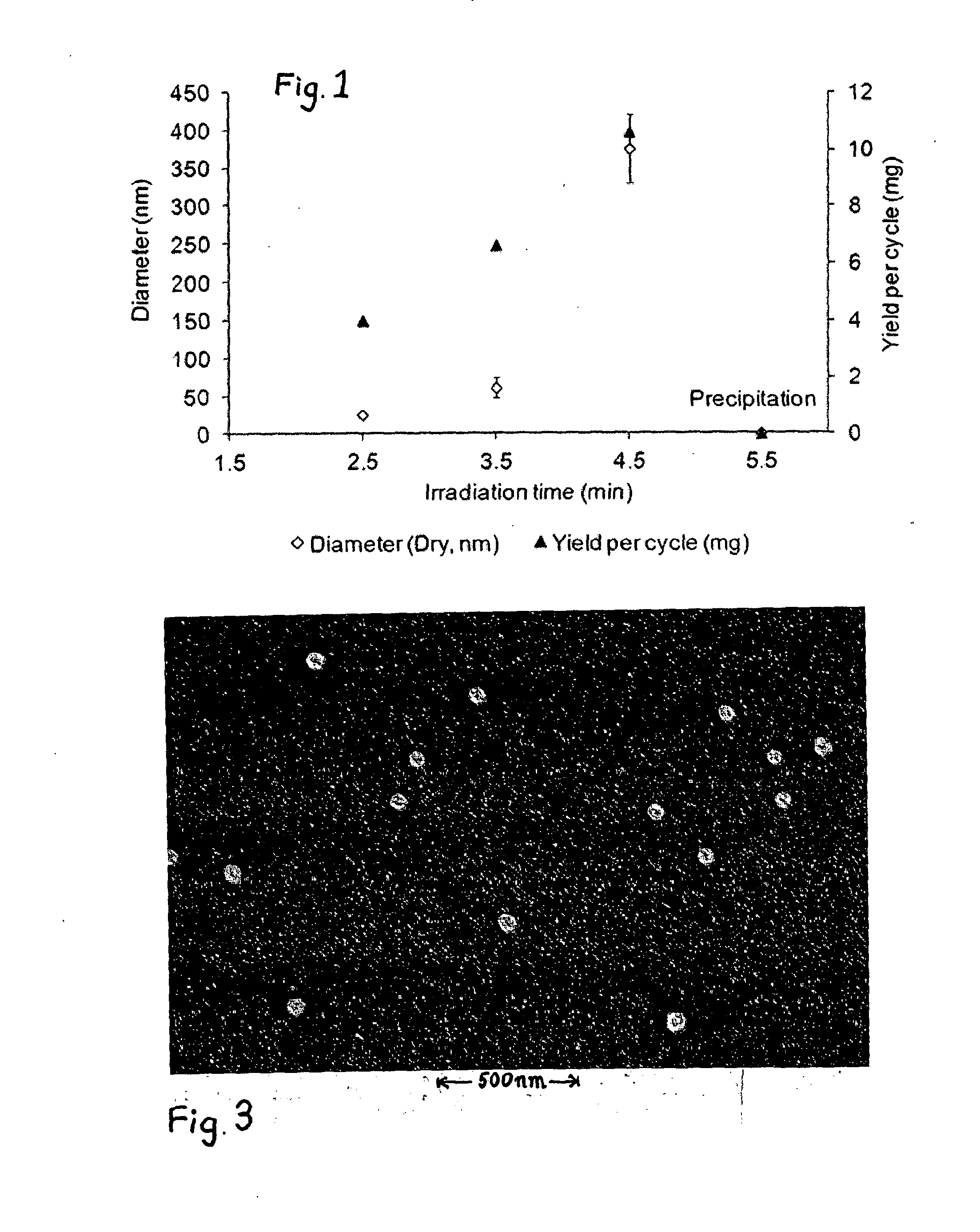Photoreactor and Process for Preparing MIP Nanoparticles
a photoreactor and nanoparticle technology, applied in the field of photoreactors, can solve the problems of difficult recovery, frequent need to use templates which are expensive and/or difficult to obtain, and the inability to use molecularly imprinted polymers (mips) in pharmacology and medicin
- Summary
- Abstract
- Description
- Claims
- Application Information
AI Technical Summary
Benefits of technology
Problems solved by technology
Method used
Image
Examples
example 1
[0073]Preparation of template-derivatised solid support.
[0074]Glass beads were activated by boiling in NaOH 4 M for 10 minutes, then washed with double-distilled water and acetone and dried at 80° C. The beads were then incubated in a 2% v / v solution of 3-aminopropyl trimethoxysilane in toluene overnight, washed with acetone and subsequently incubated in a 7% v / v solution of glutaraldehyde in PBS buffer pH 7.2 for 2 hours, after which they were rinsed with double-distilled water. The surface immobilisation of the template was performed by incubating the heads in a 5 mg / ml solution of the template in PBS pH 7.2 overnight at 4° C. Methylpyrrolidone (10% v / v) was also added as co-solvent during the immobilisation of melamine. The glass beads were washed with water and dried under vacuum, then stored at 4° C. until use.
Automated synthesis of imprinted particles with specificity towards melamine.
[0075]The synthesiser used consisted of two pumps 32, 34 delivering up to eight separate feed...
example 2
[0076]Automated synthesis of imprinted particles with specificity towards vancomycin.
[0077]For the synthesis of imprinted polymer particles, glass beads (23.5 g) coated with vancomycin were prepared generally as described in Example 1, and loaded into the temperature controlled glass reactor. The setup used was as described in Example 1. The following steps were all programmed into the control software and the synthesiser operated in automatic mode. The reactor was filled with solvent (acetonitrile) delivered by a computer-controlled pump. The column was cooled down to 4° C. and 4 ml of monomer mixture injected onto the column from a different feed line. The composition of the monomer mixture was (in % w / w): Acetonitrile 79%, N-isopropylacrylamide (NIPAm) 10%, N-tert-butylacrylamide (TBAm) 8.5%, benzyl diethyldithiocarbamate (INIFERTER) 1.62%, N,N′-methylenebisacrylamide (BIS) 0.5%. The polymerisation was initiated by UV irradiation which lasted 3.5 min. Afterwards the solvent pump ...
PUM
| Property | Measurement | Unit |
|---|---|---|
| molecular weights | aaaaa | aaaaa |
| diameters | aaaaa | aaaaa |
| diameter | aaaaa | aaaaa |
Abstract
Description
Claims
Application Information
 Login to View More
Login to View More - R&D
- Intellectual Property
- Life Sciences
- Materials
- Tech Scout
- Unparalleled Data Quality
- Higher Quality Content
- 60% Fewer Hallucinations
Browse by: Latest US Patents, China's latest patents, Technical Efficacy Thesaurus, Application Domain, Technology Topic, Popular Technical Reports.
© 2025 PatSnap. All rights reserved.Legal|Privacy policy|Modern Slavery Act Transparency Statement|Sitemap|About US| Contact US: help@patsnap.com


